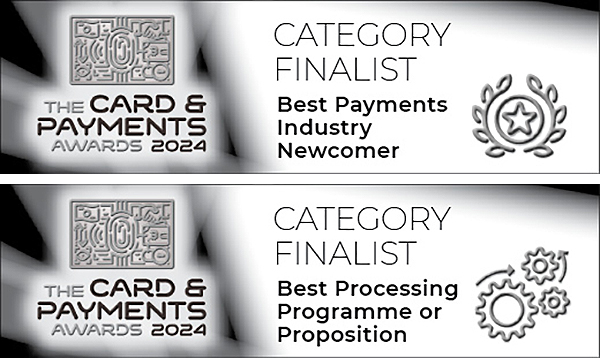Chargeback Guidance
What is a Chargeback?
A chargeback (also called a dispute) is when a customer contacts their bank and asks for their money back from a card transaction. The bank forces the refund, often because the customer claims:
- The payment was fraudulent.
- They didn’t get what they paid for.
- They never got a refund.
- Something went wrong at checkout.
Common Types of Chargebacks
Cardholders usually have up to 120 days to raise a chargeback, depending on their card provider (like Visa or Mastercard).
How Chargebacks work
Step 1: Information Request (optional)
- Sometimes, the bank just wants more info before refunding. You'll be asked for proof, like a receipt.
- ClearAccept will call/email you if this happens.
Step 2: Chargeback Raised
- The bank refunds the customer right away and takes the money from ClearAccept, who then takes it from your account (including a £18 fee).
- You’ll see the dispute in your ClearAccept portal.
Step 3: Respond or Accept
- You have 7 days to send evidence to fight the chargeback (receipts, delivery confirmation, etc.)
- Or you can accept the chargeback if it’s fair, and do nothing else.
Step 4: Review by the Bank
If you submit evidence:
- You win: Money goes back to you.
- You lose: The customer keeps the refund.
- Sometimes, the bank tries again with additional evidence or a new reason (called a second chargeback).
Step 5: Pre-Arbitration/ Arbitration (Last Resort) – Optional
The cardholder’s issuing bank might reject your case; this is called a pre-arbitration.
You have two options:
- Accept the card issuers claims
- Appeal to the arbitrator from the card network to make an impartial final judgement; this is called arbitration.
If you lose, you’ll have to pay a €500 fee. (This fee is set by Visa and Mastercard for the additional review process).
If you win, no fee and the money is returned.
What happens when you get a Chargeback?
- ClearAccept will call and email you with the details.
- You’ll need to respond within 7 days to accept or fight the claim.
- Use the ClearAccept portal to view and manage disputes.
How to avoid Chargebacks
To reduce chargebacks:
- Keep customers informed — especially about delays or changes. If delivery timeframes have changed make sure the customer is made aware of this.
- Keep your website UpToDate with delivery timeframes.
- Keep records — save emails, texts, receipts, or anything that proves you delivered as promised.
- Use tracking for physical goods which require signature and provide photographic evidence of delivery.
- Refund quickly if you have concerns about a payment or your customer is entitled to a refund.
- Be careful with phone/mail orders (MOTO), which are easier to dispute. Ensure you follow up with an email to the customer.
- Make sure your policies are clear on your website (returns, delivery times, terms and conditions) and where possible have a tick box showing that they adhere to your terms and conditions.
If you require further guidance, contact TM@clearaccept.com
What supporting information can I provide to support a chargeback defence?
Supporting documentation can help strengthen your response to a chargeback dispute. Please note that this list is not exhaustive and is just some examples of supporting documents that can be provided for some of the most common chargeback reason codes. Please note that providing the suggested information does not guarantee a successful outcome, as the decision rests with the card issuer/ card schemes (Visa and MasterCard) and not ClearAccept.
Goods or Services Not Received
Suggested Supporting Documents:
- Shipping/tracking information showing delivery (with signature if possible)
- Proof of in-store pickup (signed receipt or ID check)
- Delivery confirmation from carrier
- Email or SMS communication confirming delivery
- Customer communication acknowledging receipt
Goods or Services Not as Described or Defective
Suggested Supporting Documents:
- Product/service description from website or receipt
- Photos or evidence showing item met described condition
- Return/refund policy shown before purchase
- Correspondence showing attempt to resolve with customer
- Tracking details for return (if applicable)
Duplicate Processing or Incorrect Transaction Amount
Suggested Supporting Documents:
- Explanation of why charges occurred (e.g., multiple services)
- Distinct invoices or receipts for each charge
- Refund receipt for duplicate charge (if applicable)
- Copy of authorisation logs showing multiple entries
Cancelled Recurring Transaction (e.g., Visa 13.2, Mastercard 4841)
Suggested Supporting Documents:
- Copy of the terms and conditions showing the cancellation policy
- Proof that the customer did not cancel (or cancelled after charge)
- Evidence of prior notification of upcoming charge
- Refund policy and cancellation request logs
- Screenshots of customer account activity
Cancelled or Returned Merchandise
Suggested Supporting Documents:
- Refund/credit memo or transaction reversal
- Copy of your return/cancellation policy
- If possible include a tick box at checkout to show the cardholder adheres to the terms and conditions
- Proof customer returned the item outside the allowed window
- Email from customer confirming they received the item
- Any communication showing you attempted to resolve
Please be advised that the information contained within this document is to be used as guidance only. Whilst we strive to ensure the guidance provided is as accurate as possible, the information does not constitute any legal obligation on ClearAccept nor may ClearAccept be held responsible for the actions taken by the Card Issuer organisations in their processing of their cardholder disputes.



